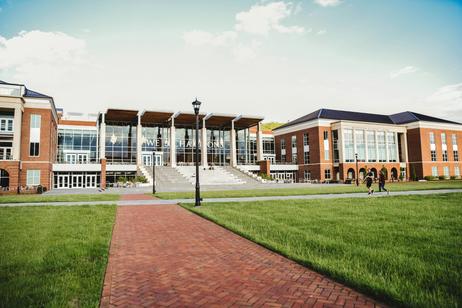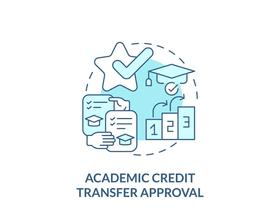Community Colleges Are Changing Strategies to Increase Enrollment (2025 Update)
Community colleges once viewed as the fallback option are stepping into the spotlight—reimagining how they recruit, retain, and serve students. In 2025, they are adopting new strategies informed by shifting demographics, funding pressures, evolving workforce demands, and technological innovation. Below is a refreshed look at how community colleges are changing strategies to increase enrollment, drawing on the latest data, examples, and expert insights.
Enrollment Trends in 2025: A Turning Tide?
After years of post-pandemic uncertainty and decline, community college enrollment is showing signs of recovery and renewed momentum. In spring 2025, total postsecondary enrollment rose 3.2 percent year over year, adding 562,000 students, with community colleges leading growth among undergraduate institutions.
From fall 2023 to fall 2024, community colleges saw a 3.9 percent increase in headcount, reaching about 10.5 million students, including both credit and noncredit enrollment. In many states, community colleges outpaced even four-year institutions: for example, North Carolina’s two-year colleges grew by 8.3 percent in spring 2025. EdNC
Moreover, transfer enrollment has surged: community colleges reported a 5.8 percent year-over-year increase in transfers, with 13.5 percent more transfer students than in 2020. Freshman enrollment at community colleges also outpaced other sectors, climbing 7 percent in 2024.
Still, the overall snapshot remains modest: undergraduate enrollment is about 2–3 percent below pre-pandemic levels overall, signaling that recovery is underway but not yet complete. These data suggest the moment is ripe for community colleges to double down on strategies that attract new learners, re-engage dropouts, and deepen alignment with student needs.
Why Change Is Urgent
Several systemic pressures are motivating community colleges to rethink enrollment:
Funding tied to performance and enrollment: Many states are shifting budgets toward performance metrics (e.g., completions, retention), raising the stakes for colleges with flat or declining enrollment.
Shifting demographics: Declining birthrates and more diverse student bodies mean community colleges must expand beyond traditional markets.
Workforce demands: Employers increasingly seek credentialed, skilled workers in shorter timeframes. Colleges must adapt their offerings to meet those needs.
Competition from nonprofits, bootcamps, and credential providers: Learners now have more flexible, nontraditional alternatives.
Technological opportunity & challenge: AI and data analytics offer powerful tools—but institutions must invest wisely in them.
With this backdrop, community colleges are changing strategies to increase enrollment by rethinking core practices—from recruitment to retention to student experience.
Strategic Shifts: What’s Changing on the Ground
Below are key strategies community colleges are adopting in 2025 to increase enrollment, with fresh examples and evidence.
1. Emphasizing Short-Term Credentials & Microcredentials
One of the most prominent trends is the pivot away from the “all-or-nothing” associate degree model, toward more modular, stackable credentials and microcredentials. According to EAB, credential awards in spring 2024 grew by about 10.3 percent year-over-year—a shift increasingly embraced by younger learners as well as adult students. EAB+1
Instead of viewing noncredit and short-term credentials as peripheral, forward-looking colleges are weaving them into clear pathways that ladder into full degrees. A one-front-door admissions model ensures that students entering via short credentials still see the full pathway of options. EAB+1
At Calbright College (California’s fully online community college), for instance, the focus is exclusively on short-term, high-demand credentials targeted to adults ages 25–34. Its enrollment has grown to more than 6,300 by March 2025, with students primarily seeking fast credentialing aligned with workforce demand.
2. Doubling Down on Dual Enrollment & Early College
Dual enrollment continues to be a linchpin in enrollment strategy. In many states, students taking college-level courses in high school now represent over 20 percent of two-year college enrollments. In 2025, better federal data from the U.S. Department of Education now allow colleges to track dual enrollment more precisely and strategically allocate resources. Colleges are strengthening partnerships with K–12 districts—aligning curricula, guaranteeing seamless transitions, and offering early admissions incentives.
Some systems now offer guaranteed scholarships or credit pathways that ensure dual enrollment students can move seamlessly into the community college’s degree programs. This continuity reduces leakages—when high school students fail to matriculate after dual enrollment.
3. Flexible Enrollment Models & Multiple Start Dates
Rigid academic calendars and a single start date are increasingly seen as barriers. Colleges are introducing multiple start dates (e.g., quarterly, rolling) to capture students whose life circumstances shift.
Similarly, colleges are waiving or discounting application fees and simplifying admissions forms—small changes that can reduce “friction” in the enrollment funnel.
These tactics give prospective students more flexibility, reduce abandonment, and send the message that community college is responsive to real-world scheduling needs.
4. Smarter Use of Data, AI & Predictive Analytics
2025 has ushered in a more generative-AI–friendly era. Many community colleges are investing in integrated data platforms (connecting CRM, LMS, SIS) and adopting predictive analytic models to flag at-risk students early. ZogoTech+1
A recent research study explores transfer learning for retention prediction across community colleges, enabling institutions to leverage models from peer institutions while respecting privacy constraints.
These predictive systems help advisors intervene when engagement dips or when students deviate from their paths—turning potential dropouts into retained learners.
5. Reimagined Marketing, Branding & Digital Recruitment
Community colleges are becoming more sophisticated in marketing. Rather than generic outreach, they now use hyperlocal, persona-based targeting to reach under-served communities or those in workforce deserts.
These campaigns often highlight outcomes—graduate earnings, transfer partnerships, or job placements—instead of abstract promises. Some colleges co-brand with regional employers, offering “you train here, you get hired there” messaging.
6. Strengthening Wraparound Support & Nonacademic Services
Academic offerings alone are not enough; support now matters more than ever. Colleges are bundling financial aid advising, child care, mental health, transportation vouchers, and career coaching into the onboarding experience.
Institutions that succeeded in reversing enrollment declines often focused on strengthening student success units, integrating support into the student journey, and ensuring equity of access.
The “Accelerating Recovery in Community Colleges” (ARCC) initiative under the U.S. Department of Education continues to support strategies for reengaging stopped-out students and simplifying reentry by reducing bureaucratic hurdles.
7. Strategic Program Alignment to Regional Labor Markets
Enrollment improvements must be tethered to real job opportunities. Colleges are closely aligning program development with regional employer needs—especially in fields like health care, cybersecurity, manufacturing, and renewable energy.
One illustrative example: the Alamo Colleges District successfully passed a nearly $987 million bond to expand workforce-related facilities (engineering, nursing, applied tech), anticipating large enrollment growth by 2030.
Similarly, Austin Community College responded to a free-tuition pilot by expanding classes and hiring more adjunct faculty to meet a 15 percent semester-over-semester enrollment jump.
Barriers & Risks to Watch
Even as community colleges change strategies to increase enrollment, several risks persist:
Resource constraints and staff burnout: Adding starts, programs, and data systems demands ongoing investment in people and infrastructure.
Equity and access gaps: Predictive models must be audited for bias, or they risk penalizing historically marginalized groups.
Overreliance on short credentials: Without clear stackability, students may end with credentials that don’t translate to better earnings or opportunities.
State funding volatility: In regions where funding depends on enrollment or performance metrics, a dip in the wrong metric can put institutions at risk (e.g., some California districts losing cost-of-living funding if enrollment criteria aren’t met).
Competition from alternatives: Bootcamps, credentials from tech firms, and nontraditional education models may lure away certain career-oriented learners.
Recommendations for Community Colleges (and Stakeholders)
Adopt a “student-first funnel” approach. Map the full learner journey—from high school to workforce—and remove as much friction as possible at every stage.
Invest in shared data infrastructure. Prioritize integration across systems (admission, advising, learning, CRM) and deploy AI/analytics with fairness guardrails.
Lean into employer partnerships. Codesign program pathways and co-brand messaging to signal immediate ROI to prospective students.
Scale dual enrollment and equity initiatives. Make early college access universal and design transitions to degree programs.
Ensure wraparound supports are sustainable. Launch scalable models for services like child care, transportation, advising, and financial aid that keep students from dropping out due to nonacademic barriers.
Monitor outcomes rigorously. Use completion, transfer, and earnings data to refine strategies in real time.
Advocate for policy alignment. Push for state policies that reward growth and equity, rather than penalize volatility.
Looking Ahead: The Future of Enrollment
Community colleges are no longer passive recipients of demographic tides—they are shaping their own futures. In 2025, successful institutions will be those that embrace flexibility, style="line-height:1.38;margin-top:12pt;margin-bottom:12pt;">While challenges remain—especially in funding and equity—the momentum is unmistakable. As the enrollment recovery continues, colleges that change strategies to increase enrollment will not only survive—they may flourish as indispensable engines of opportunity.















